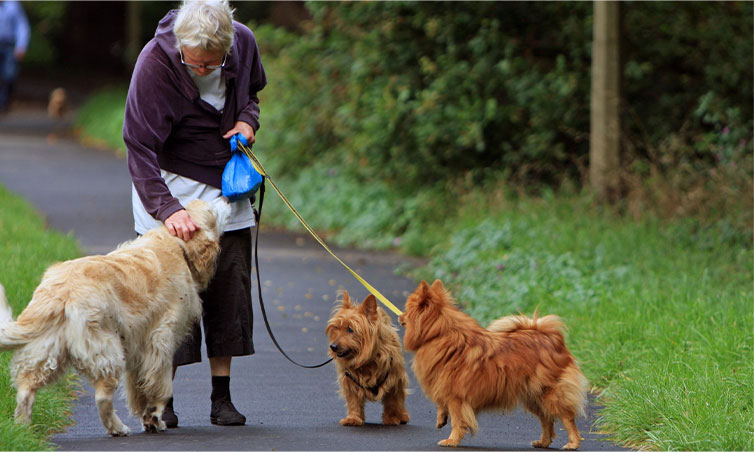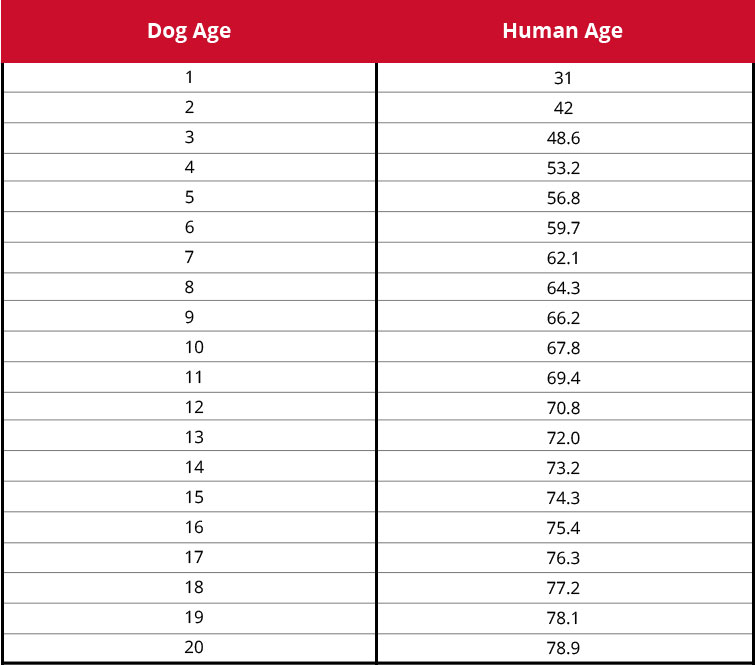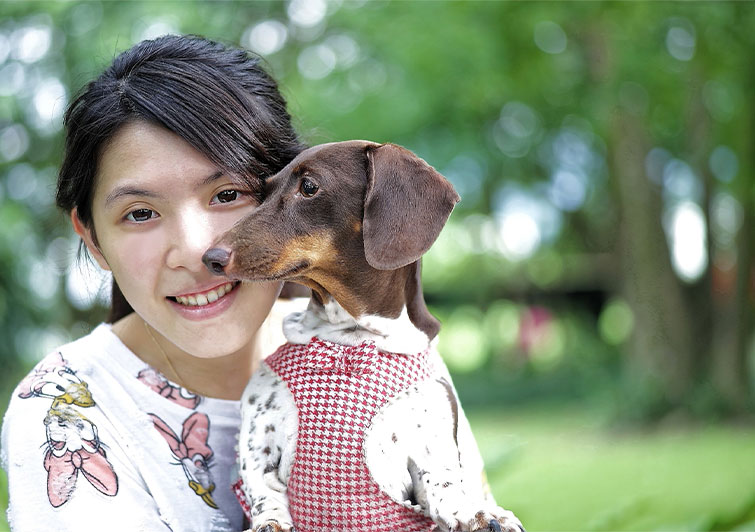Dog Years: How to Accurately Calculate Your Dog’s Age
As it turns out dog years to human years isn’t as simple as multiplying their human age by 7. Factors like breed and size also play a role. Discover your dog’s true age with our handy aging chart.
DOG TIPS AND TRICKS

Posted by bravectosouthafrica – 14 September 2020
Wait – Does a Dog Year Really Not Equal 7 Human Years?
Not if you want your estimate of how old your best friend is to be more accurate, no. The calculation that one dog year is equal to seven human years is based on the assumption that humans generally live to an average age of 70, while dogs only live to be around 10. This formula has no real science backing it up, as veterinarians have debunked the formula years ago.
So most people would assume that their six-year-old dog is 42 human years old. It may not be completely accurate, but there is still value in this calculation, as it gets people to realise that their beloved fur children don’t age in the same way human children do. Kansas State University veterinarian, William Fortney, says he believes that the seven-year rule has its origins as a marketing tactic. It was a way to inform the public of just how fast dogs age, compared to humans, from a health point of view. He is quoted as saying: “It was a way to encourage owners to bring in their pets [for a check-up] at least once a year.”
As is the case with humans, dogs have different health needs at different stages of their lives and this needs to be taken into account to provide them with the best and fullest lives possible. A one-year-old dog and a 13-year-old dog don’t have the same needs anymore and both require personalised care.

How to Calculate a Dog’s Age Equivalent in Human Years
A recent study done by researchers at the University of California San Diego has proposed a new and improved dog to human age conversion formula (and it is not quite as easy to calculate off the top of your head as the old method). It is based on the changes that both human and dog DNA undergo over time.
During the natural process of aging in humans and canines, chemical tags (named methyl groups) get added to the organism’s DNA molecules. These additional methyl groups change DNA activity but don’t change the DNA itself. The changes correlate with distinct growth stages and a scientist thus uses this information/data to help determine an organism’s biological age.
In the specific study, which you can read about in-depth in the July 2020 edition of the online journal, Cell Systems, researchers set out to compare the state of methylation across 320 humans between the ages of 1-103 with that of 104 Labrador retrievers between the ages of five weeks and 16 years.

Researchers found that although puppies develop much quicker than humans in the early stage of life, older dogs’ aging curve starts to level out. An 8-week old Labrador pup is the age equivalent of a 9-month old human baby. At one year old, a Labrador is approximately 31 years old in human years, while a dog of 4 is around 53 human years old.
This brand new dog years to human years formula aligns a Labrador’s average lifespan with that of a human (12 years versus 70 years). For a more accurate estimate of your dog’s age in human years, your canine companion must be one year or older and you need to convert their age into a natural logarithm. The log is then multiplied by 16 and 31 is added. This final answer is how old your dog is in human years.
Say your dog is nine years old. The natural log of nine is 2.1972. Multiplying that with 16 gives you 35.1556. Plus 31 and you get 66.2. Thus, your dog is equal in age to a 66-year-old human.
For your convenience, Bravecto® has prepared a handy dog aging chart so you don’t have to do the math:

It is, however, important to note that this formula was developed while studying a group consisting exclusively of yellow Labradors. Dogs of a different breed and size are likely to have (slightly) different results because, as a general rule, smaller dog breeds tend to enjoy longer lifespans than larger breeds. But the new formula is still a big improvement over the old ‘multiply by seven’ method, as it is backed up by science. With further testing and refinement to the formula, we will hopefully be able to more accurately determine more dog breeds’ aging processes in the future.
https://blog.bravecto.co.za/wp-content/uploads/2020/09/Bravecto®-has-prepared-a-handy-dog-aging.jpg” alt=”Bravecto® has prepared a handy dog aging” width=”755″ height=”459″ />
For an alternative dog years converter that uses the size of the breed to determine its human equivalent age, see the American Kennel Club’s dog age chart here. You can also use Pedigree’s nifty dog age calculator, which allows you to select your dog’s specific breed from a lengthy list of options. Calculating dogs’ years to human years is now easier than ever before.
Physical Signs Based on a Dog’s Age
If you are a fur parent to a rescued or adopted dog, you may not know your wet-nosed friend’s exact date of birth. This shouldn’t be a problem, as you and your vet will be able to make a guesstimate of their age based on the results of a full physical exam. Typical signs of aging in dogs include:
- Loose skin
- Stiff joints and legs
- Greying hair that usually starts at their muzzle and spreads to the rest of their face, head and body
- Cloudy eyes
Teeth can also be a good indicator of the age of a dog but it is dependent on how much dental care (if any at all) they received previously:
- 8+ weeks All of a dog’s baby teeth are present
- 7+ months All adult teeth are present; they are clean and white
- 1-2+ years Some teeth have dulled and the rear teeth may show signs of yellowing
- 3-5+ years Some wear and tear is visible; nearly all teeth show signs of tartar build-up
- 5-10+ years Teeth have become even more worn down and may show signs of dental disease
- 10-15+ years Teeth have been worn down, lots of tartar build-up is present and some teeth may even be missing
Keep Your Dog in Good Spirits and Health – No Matter What Their Age
Bravecto® is a fast-acting and long-lasting solution to your dog’s tick, flea and mite problem. It’s suitable for dogs in various stages of life. As long as your dogs weigh 2+ kg and are older than eight weeks, they can be treated with either Bravecto® Chew or Bravecto® Spot-On for Dogs. A single dose of the chewy treat provides up to 12 weeks of flea and tick protection and a dose of the topical treatment will provide 4 months of tick protection, as well as 6 months of flea protection.
Now, that’s at least three times as long as competing monthly treatments. You only have to treat your dog four times per year! Spend more time having fun with your loyal pal and less time fretting about keeping them external parasite-free.
Afraid you’ll forget to re-dose in-between treatments? Don’t be! Simply download the reminder app, fill out your pet(s) details and you’ll receive a reminder the next time they’re due for a dose.

Subscribe to our Newsletter
Get to know your furry friend better! Sign up for all things dog- or cat-related.
The Hairy Facts about the dreaded hairball
12 April 2021
Help! My dog’s barking mad! Volume 2
12 April 2021
Your Itchy, Scratchy Cat – All About Cat Skin Problems
12 April 2021
The Dog’s Diet: A Bone of contention?
01 April 2021
Mango Fly Worms: How to Spot and Eliminate them
Posted on November 28,2019
Managing Mange And Mites In Your Dog
Posted on June 11,2018
Why Do Cats Purr and How? Learn What Your Cat Is Saying
Posted on October 14,2020
How to Get Rid of Ear Mites in Dogs
Posted on November 06,2019









